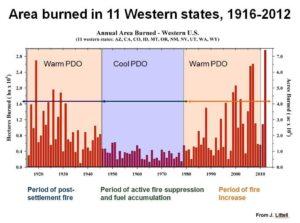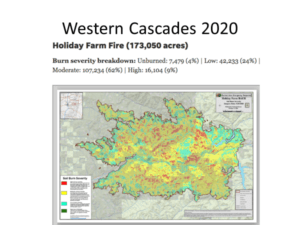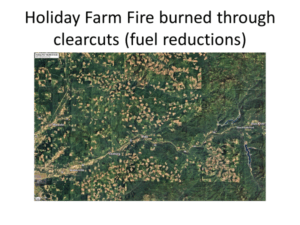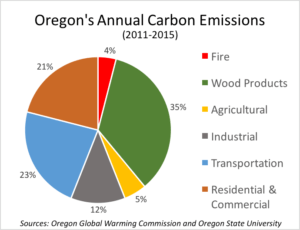Climate Not Fuels Drive Large Blazes

Post-fire logging, Gifford Pinchot National Forest, Washington Cascades. Photo: Jeffrey St. Clair.
Logging proponents fail to acknowledge that climate is the ultimate arbitrator of wildfires. That is why the coastal forests of Oregon and Washington, which contain more “fuel” than any place in the northern Rockies, seldom burn. Why? It’s too cool and moist.
Vegetation responds to climate, and today’s climate is considerably different than even a couple of hundred years ago when we were coming out of the cool, moist climate of the Little Ice Age.
We are in the worse drought in over a thousand years. We are seeing record high temperatures. Average wind speeds are increasing. These factors are responsible for the increase in wildfire spread and severity. For instance, for every 1-degree rise in temperature, fire risk is increased by up to 25%. Wind impact is also exponential, with high winds responsible for every large fire across the West.
We have historical references demonstrating the correlation between climate and fires—long before anyone can claim “fire suppression” created large fires. For example, the 1910 Big Burn that consumed more than 3 million acres of the Northern Rockies occurred long before anyone could assert that “fire suppression” led to fuel accumulation. And 1929(i.e., the beginning of the Dust Bowl), as much as 50 million acres were burned across the West. This acreage is five times what we now call a record year if 10 million acres burn.
A mid century cool, moist period 1940-1980 led to a decline in fire igntions and fire spread which many use as the “norm” for fire behavior. Nature (climate) did a good job of fire suppression.
However, our view is skewed by a decline in fires in the mid-century between the 1940s-1980s. Some logging proponents assert that “fire suppression led to fuel accumulations. In reality, the West was in the midst of a cycle of cool, moist conditions, which resulted in few ignitions and limited fire spread, and glaciers were growing in the PNW. During this period, Nature (climate) did a fine job suppressing fires, but in typical human arrogance, we try to take credit for it.
Furthermore, there is abundant evidence from large blazes around the West that logging does not preclude large blazes. For example, the town of Paradise, California, which the Camp Fire consumed, was surrounded by clearcuts, hazardous fuel reduction projects, and even two previous fires-all of which “reduced” fuels, yet propelled by 60 mph winds, the fire spread as fast as one football field a second.


The area burned by the Holiday Farm Fire in 2020 was under “active forest management.” (Google Earth)
The Holiday Farm Fire charred the western slopes of the Oregon Cascades in 2020; the Dixie Fire, California’s largest blaze, and Bootleg Fire in Oregon were respectfully the largest blazes last year in each state, burned through substantial areas of past logging. Here’s a link to a Google Earth view of clearcuts that made up the bulk of the area charred by the Holiday Farm fire.
Numerous studies confirm that climate drives large blazes and logging exacerbates fire spread, and recently more than 200 scientists sent a letter to Congress.
Though much made by ill-informed commentators who argue that fuel build-up due to alleged fire suppression in low elevation pine and Doug fir has created the current situation for large blazes. However, dry montane forests dominated by ponderosa pine and Douglas fir make up only 4% of northern Idaho and western Montana forests. Therefore, even if fire suppression had led to a fuel build-up, these forests could not be responsible for the massive acres being burned since they make up a small percentage of all forest types.

The Wood Products Industry (green) is the largest contributor to GHG emissions in Oregon.
The irony of logging as a cure for large wildfires is that the wood products industry significantly contributes to Greenhouse Gas Emissions. For instance, 35% of the GHG emissions in Oregon are due to the logging industry. Thus, more logging only puts more CO2 into the atmosphere resulting in even greater climate warming.
Spending funds logging forests in the false hope that one can reduce large blazes are looking in the rear-view mirror. Unless we reduce GHG emissions, we will continue to see large blazes driven by climate warming. In the meantime, rather than log our forests, the best way to protect communities and structures is home hardening working from home outward.
No comments:
Post a Comment